Characteristics of Berkutovskoe apples
The Berkutovskoe apple tree, bred in the late 70s, belongs to the winter varieties. The resulting hybrid combines the features of a pink-striped species and Antonovka. The culture, unpretentious in care, is highly resistant to diseases.
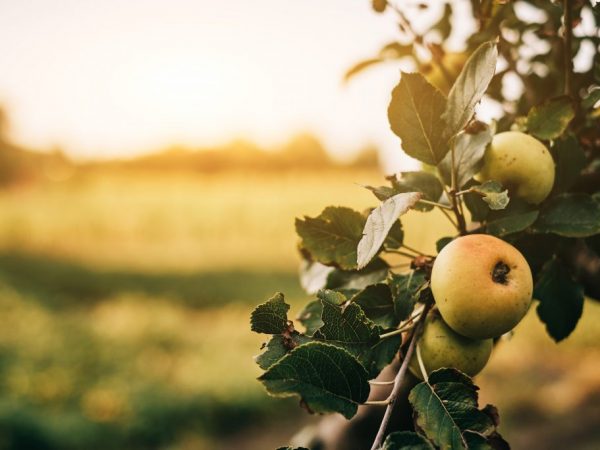
Characteristics of Berkutovskoe apples
Description
It is a variety that can withstand low ambient temperatures. High winter hardiness is the main advantage of the Berkutovskoe apple tree. This indicator decreases depending on the region where the land plot is located - in the center of the country it is reduced, and closer to the Volga region it is high.
Keeping quality is also high. The fruits can lie in a cool room for up to six months. Apples are stored until May and do not lose their quality characteristics.
This is a fast growing culture. Its versatility lies in the fact that it quickly adapts to different temperature regimes - it grows in central Russia and in the north of the country.
The first apples are formed on a young tree, which is not more than 4 years old. The crop bears fruit annually - it gives a stable high-quality crop. The abundant appearance of fruit depends on the method of pollination and the conditions created by the grower.
Up to 70 kg of harvest can be harvested from one tree. The variety is drought-resistant, which allows you to grow a crop in hot summers and low humidity levels.
Fruit characteristics
The apple of the variety is large in size - above average. One apple weighs up to 170 g. Record-breaking fruits weigh up to 250 g. The average apple diameter is 80 mm. Outwardly, it resembles the fruit of Antonovka, which was used to obtain the Berkutovskoe hybrid.
Description of apples:
- the surface is smooth;
- there are small bumps on the skin;
- the peel is even, smooth, has a glossy sheen;
- there is no wax plaque on the fruit;
- the color of the apple varies from green to yellow; as it ripens, a characteristic blush appears;
- there are no subcutaneous points inside;
- oblique stalks - small angle;
- the funnel has an average width;
- the calyx does not fall off, in most cases it is closed.
The core of apples is in the shape of an onion. The seed chambers are large. The bones are tapered.
The pulp of the fruit is creamy milky in color, juicy, has a pleasant, but light aroma. Apples have a dense, but fine-grained structure. The taste of a ripe fruit is sweet with a slight sourness. The tasting score reaches 5 points.
This variety tolerates transportation well.
The purpose of the fruit is universal. They can be used raw or boiled: compotes, juices, and jams are prepared from apples.
Description of the tree
The apple variety Berkutovskoye has an average tree height. They grow moderately but steadily. The apple tree reaches a height of up to 3 meters in the early years. The crown has medium density, but abundant foliage growth on the branches.
The shape of the crown is round - it must be maintained from the first year by proper pruning. The bark of the tree is smooth and even. It is gray in color, which darkens over the years. The branches are straight, extending from the trunk at an angle of 90 °.

The apple tree needs good pollinators
Description of shoots:
- branches of medium thickness;
- straight shoots have little hairiness;
- the color of the branches is red-brown;
- the size of the lentils is medium;
- medium buds are rounded and strongly pressed against the branch;
- large green leaves of an elongated rounded shape;
- the edges of the foliage are dusty;
- the surface of the plate is smooth and matte.
Medium-sized flowers formed on the branches. They are fuzzy pink. The shape of the inflorescences is saucer-shaped. Medium in size and cream colored buds.
Good pollinators are needed for proper fruiting of the variety. Without them, the apple tree loses its quality indicators. Varieties of the same ripening period are suitable for this. The Sinap apple tree is a good cross-pollinator.
Disease resistance is average: with proper treatment of the site and the tree, it is rarely affected by scab or powdery mildew.
The choice of planting material
The choice begins with determining a suitable planting material for a land plot. Winter hardiness of the Berkutovskoye variety does not guarantee that the seedling will quickly take root in cold climates. The colder the winter, the more fertile the soil should be.
An important condition for winter species is the water table. The higher it is, the more difficult it is to grow a large and healthy tree. Groundwater washes away the rhizome, and it loses all nutrients. The minimum groundwater height for an apple tree is 3 meters.
An important criterion for the selection of planting material is its age. The best option is two-year-old seedlings. They are more persistent than peers and take root faster. Biennial material is more suitable for autumn planting. He manages to adapt to a decrease in ambient temperature.
A two-year-old seedling has characteristic shoots that can be used to determine the age of the material.
Better not to take a seedling with green leaves. To check it, they examine the roots. When properly grafted, the root should be elastic but strong. If it comes off, the wrong vaccine was given.
There should be no traces of rot, spots or dark spots on the planting material. The roots should be wet, even if they are put up for sale - metabolic processes are taking place inside, and the young tree is ready for planting.
It is better to buy seedlings in a nursery. A full-fledged apple tree grows from them. After the purchase, the rhizome is additionally processed and refreshed: such work guarantees its rapid growth in the open field.
Disembarkation
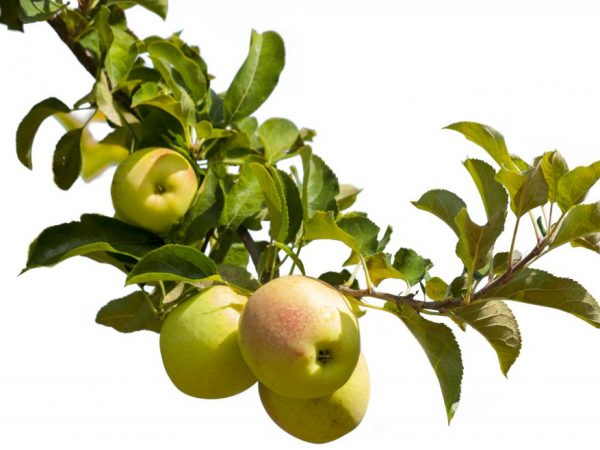
Good care will provide you with a rich harvest
Planting an apple tree is conventionally divided into several stages. The first step is to select a land plot. You cannot choose a lowland where all the stagnant water from the garden flows down. It is better to choose a well-lit area with the right neighborhood for the culture - apples of similar varieties.
When the site is selected, a planting pit is prepared. Preparatory work is carried out 2 weeks before sowing. After that, the correct mode of care is organized - watering, fertilizing the soil, pruning branches.
Timing
The apple tree is planted twice a year. Spring and autumn are suitable for these purposes. Conditions for such disembarkation:
- spring disembarkation. The temperature regime is decisive in this matter. In the spring, planting is carried out until the formation of the first buds on neighboring crops. The best option is April. If spring comes earlier, you need to focus on the condition of the soil. As soon as it warms up, you can prepare the landing pit;
- autumn landing. The second type of landing is carried out a month before the onset of frost. The period from late September to mid-October is suitable for preparatory work.At the same time, it is necessary to come up with insulation for the seedling so that it has time to prepare for the arrival of winter. Neighboring crops by this time are already shedding all the leaves.
If the fall planting fails and there is no suitable weather conditions, the two-year-old material is stored until spring. To do this, he reliably buries in until a favorable period comes.
Landing pit
A pit is dug 14-15 days before the day of disembarkation. If a spring planting is planned, the pit can be prepared in the fall. It is impossible to sow the material on the same day as the hole was dug. In such conditions, the seedling will not take root. The depth of the pit is at least 80 cm.The diameter is about 100 cm.
The following conditions are required for the pit:
- fertilizer. As soon as the hole is dug, top dressing is introduced into it. Such activities will enrich the soil so that the seedling grows faster. Organic fertilizer is selected. Compost slurry or a mixture of ash and superphosphate is laid in a thick layer - not less than 4-5 cm. For these purposes, humus is suitable: it is pre-defended. For the first week, organic matter cannot be touched, and only after 7 days it is dug up with the top layer of soil;
- drainage. For the Berkutovskoe variety, a drainage system is created without fail - it prevents stagnation of water at the rhizome. Such work is carried out after fertilizing the planting pit. The drainage elements will be a mixture of rubble and pieces of brick.
The pre-planting hole is not watered with water.
Scheme
The decisive factor for the rapid growth of the tree is the chosen spacing between the horticultural crops. The average distance between them should be 3-4 meters. This distance takes into account the stock of the planting material. If there are dwarf crops nearby, a distance of 2-3 meters is observed.
Two weeks later, disembarkation is carried out. The seed is preliminarily cleaned of excess soil and moisture: if it has settled in water with nutrients. After that, the seedling is placed in the hole, and the roots are neatly leveled.
A peg is installed next to it - such a support will allow the young tree to grow in the right direction. A layer of fresh soil is laid on top, which is carefully compacted. A soil roller is created around the trunk.
It will retain moisture and protect the root system from harmful environmental factors. The seedling is watered with 3-4 buckets of purified water. After that, in the next two weeks, other procedures are not carried out - the seedling is given time to adapt.
Care
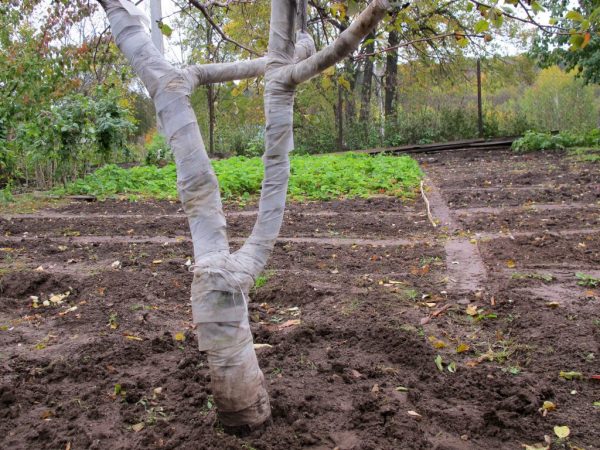
The variety is easy to care for
The variety is unpretentious in care - Berkutovskoye is grown according to the same scheme as other apple trees. He needs soil moisture, nutrient replenishment and pruning. Without these procedures, the apple tree does not give a stable harvest.
If the culture grows on loamy soils, then the care for it is minimal. The rhizome independently regulates the amount of nutrients. Sandy soils are less favorable, and if an apple tree grows on them, it is better to increase root feeding.
Basic care is complemented by:
- weeding the soil - it is necessary to remove all weeds that draw excess moisture from the ground;
- loosening the soil - carried out before watering or fertilizing - such an event will improve the quality of recharge;
- mulching - allows you to enhance the growth of the tree.
In the complex, the events will provide the apple tree with all the conditions for stable fruiting.
Irrigation works
The variety loves regular watering. In this case, the amount of moisture that is applied at a time is more important, and not the number of irrigations. Even in dry summers, the intensity of such work should not be increased. Excessive moisture will have the opposite effect - the rhizome will begin to rot, and the leaves will wither.
An apple tree of this species is drought-resistant, so it does not need excessive moisture. The tree will need no more than 4 waterings per season. The older the culture, the more moisture it will need. Seedlings are watered with 2-3 buckets of water.Under an adult tree, you will need to add at least 60 liters of liquid.
The quality of the water determines the quality of the fruit. You can not take stagnant liquid with impurities of unknown origin. Rainwater is suitable for watering an apple tree, but it must be defended.
The liquid taken from the springs is heated: for this, the vessel with it is left in the sun all day. It is better not to take water from lakes or rivers, so as not to infect the culture with pathogenic microorganisms.
Drip irrigation is selected. It is better not to add all the liquid under the root, so as not to wash out the entire fertile layer. Immediately after irrigation, the topsoil is mulched. Lined with grass or hay. This way the moisture will evaporate less.
In warmer months, it is best to spray water all over the crown to moisten the foliage and branches. For the winter, irrigation work stops before the arrival of the spring heat.
Soil replenishment
Top dressing of trees starts from the first year. The first fertilizer enters the root system from the planting pit. It lasts for several weeks. Large amounts of nutrients are applied three times a year.
Spring feeding allows a large number of ovaries to form. It is held closer to May. Nitrogen fertilizers are applied. They stimulate the rapid growth of the tree. Manure or humus is used. Ordinary grass or leaves are added to it.
During the formation of ovaries, a second feeding is carried out. It will speed up the formation of fruits and make them resistant to various problems. Complex fertilizers are used. They are introduced into the root part of the culture.
The third feeding takes place from August to September. This is the last fertilizer before the apple ripens. During this period, nitrogen substances must not be added. They will force the tree to grow and the fruit will not receive enough nutrients.
For the winter, the tree is insulated and mulched, but not fertilized. The scheme will be repeated from next year.
Pruning branches
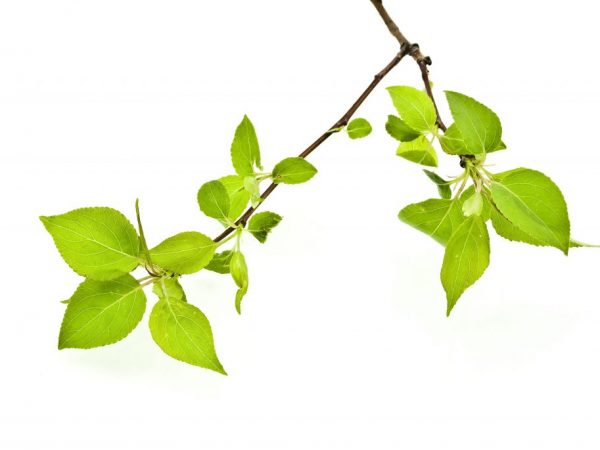
Pruning branches forms the crown of the tree
Pruning has two purposes - it protects the crop from disease and helps to create the correct crown shape. As a result, the apple tree is able to resist fungal diseases and give a stable harvest. For the Berkutovskoye variety, one of the pruning options is selected:
- tiered;
- bushy;
- cupped.
All crown shapes will allow the fruits to ripen in one period - there will be no artificial shade, and each apple will receive a sufficient amount of light. Pruning is carried out in the spring before the formation of ovaries. Otherwise, the branches will draw out excess moisture, and it will be difficult for the apple tree to recover.
Spring pruning focuses on creating a crown shape, so crooked, damaged, or improperly growing branches (at an acute angle) are pruned.
Autumn pruning can prepare the apple tree for winter. It is necessary to get rid of damaged and diseased branches. The cut sites are disinfected. If such sanitary work is not carried out, parasites appear by the spring. Often it is impossible to cut branches unnecessarily, especially during the period of fruit formation.
Preventive work
Protection from pests or parasites is an important part of mandatory care. The good resistance of the apple tree to scab is the result of timely prevention. If you treat the tree with fungicides, you can avoid diseases such as moniliosis or powdery mildew.
Pests harm foliage and fruits. They also threaten the gardener's harvest. To combat them, at least 10 full-fledged treatments are carried out during the year. This spraying, flushing the leaves and dusting the crop.
A mixture of fungicides and insecticides will help you forget about pests. It comes in tanks and is used as an aerosol. In addition, the trees of the variety are protected for the winter - the insulation helps to cope with frost, and the nets - against the attacks of rodents.
Fruiting
The apple tree begins to bear fruit from the 4th year. There will be few first fruits - no more than 6 pieces. The yield is growing every year.The maximum number of apples can be obtained from a seven-year crop. The average ripening period is mid-October.
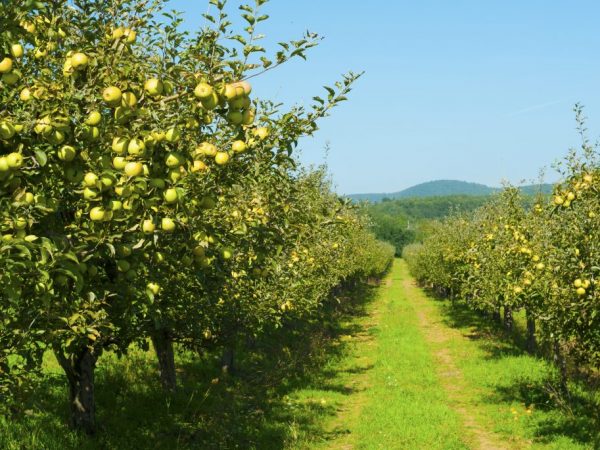
The harvest ripens in mid-October
Ripeness sets in when the apples are ready for storage. After lying down, the fruits reach consumer maturity. The process ends 2-3 weeks after harvest. The fruits begin to exude a characteristic pleasant aroma.
Fruits are stored until spring. Even in March, you will be able to enjoy the taste of winter apples. The maximum shelf life of the variety is 200 days.
Advice
To get a full harvest, it is better not to sow the entire garden with trees of the same variety. If there is no cross-pollination, the fruits will be smaller and cannot be stored for too long. Young trees are planted next to adults. This factor will also affect the quality of the future harvest.
If the culture blooms too early - for 2-3 years - the ovaries are removed. The fruits should not be allowed to stand. It is better to harvest immediately: this will extend its shelf life.
Variety variety
Berkutovskoe variety bears fruit earlier on a dwarf cart. For this, the plantings are denser and the care of the apple tree is simplified. Dwarf sub-varieties are selected for small plots of land. The late species competes with the early ones in terms of fruit quality, but requires less fertilization costs.
Such subspecies are suitable for growing in cold regions - they not only do not suffer from frost, but also quickly take root in both spring and autumn.
Growing regions
The moderate continental climate is suitable for the Berkutovskoye variety. It meets all the requirements of the crop in terms of moisture level and thermal regime. The variety grows on the territory of Russia and Belarus. In the west of the Volga region, even annual seedlings take root well. In Karelia, the variety quickly adapts.
If the conditions for the apple tree are not suitable, the gardener can level them with proper care. For this, the soil is fertilized more, the number of irrigation works increases.
Gardeners reviews
The grades are positive. Gardeners say it has its drawbacks, but the benefits outweigh them. The culture takes root quickly, which makes it not only universal, but also very popular.
The unpretentiousness of the variety allows it to be planted in any territory. In this case, care helps to improve conditions, which affects the quality indicators of the crop.
Gardeners emphasize that this apple variety is a good option, because it rarely gets sick. Minimal prophylaxis provides protection against any pests or parasites.
In winter, the tree does not require attention to itself: it is insulated after harvest, and in spring it quickly recovers. Pruning allows you to form a beautiful crown, and the apple tree becomes an ornament to any garden.

